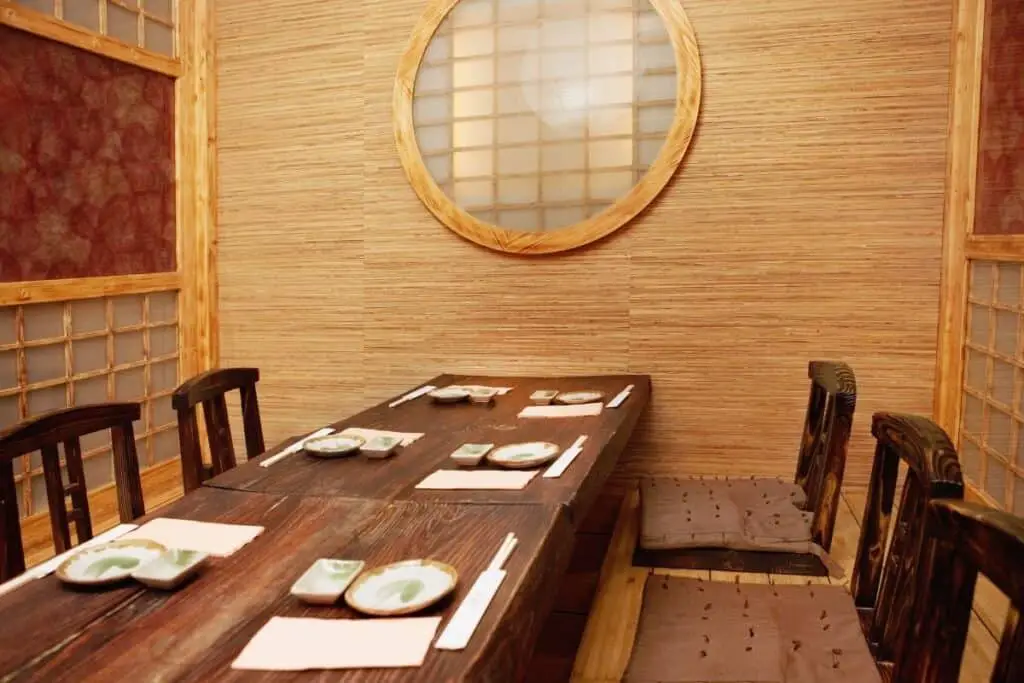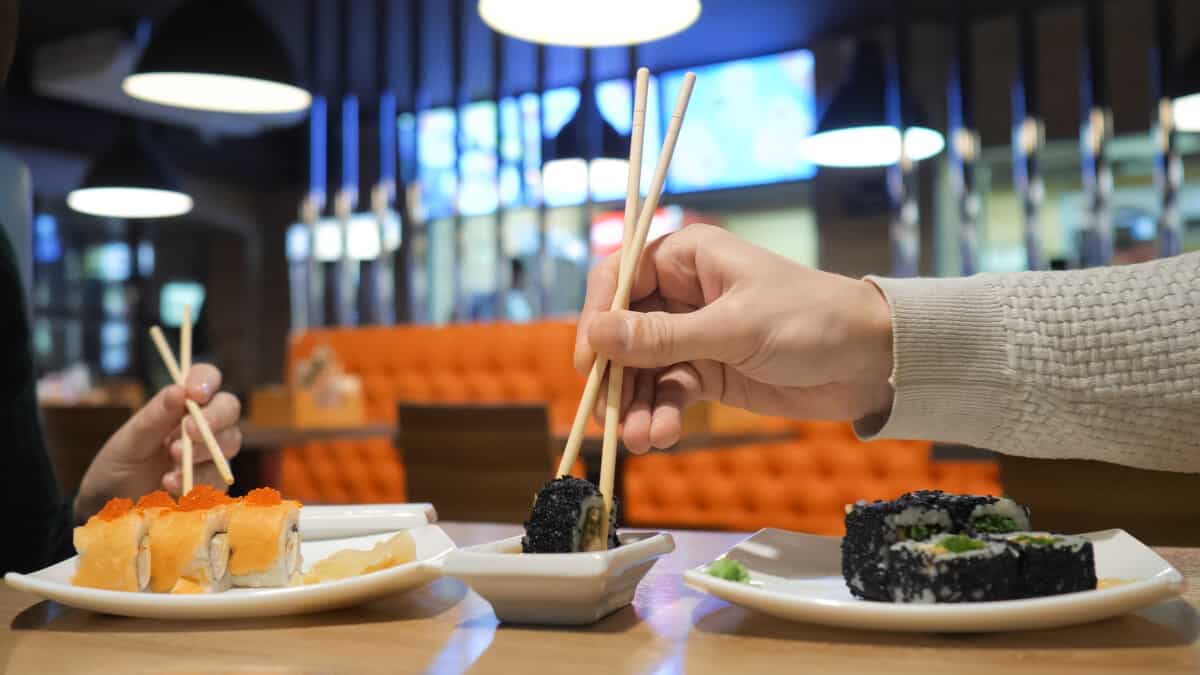When it comes to eating in other cultures you may not think much of your etiquette, but in Japan, there are certain rules that you should be aware of.
Japan is a country that is very strict in its etiquette when eating or drinking, especially when out at a restaurant or in joining co-workers after work.
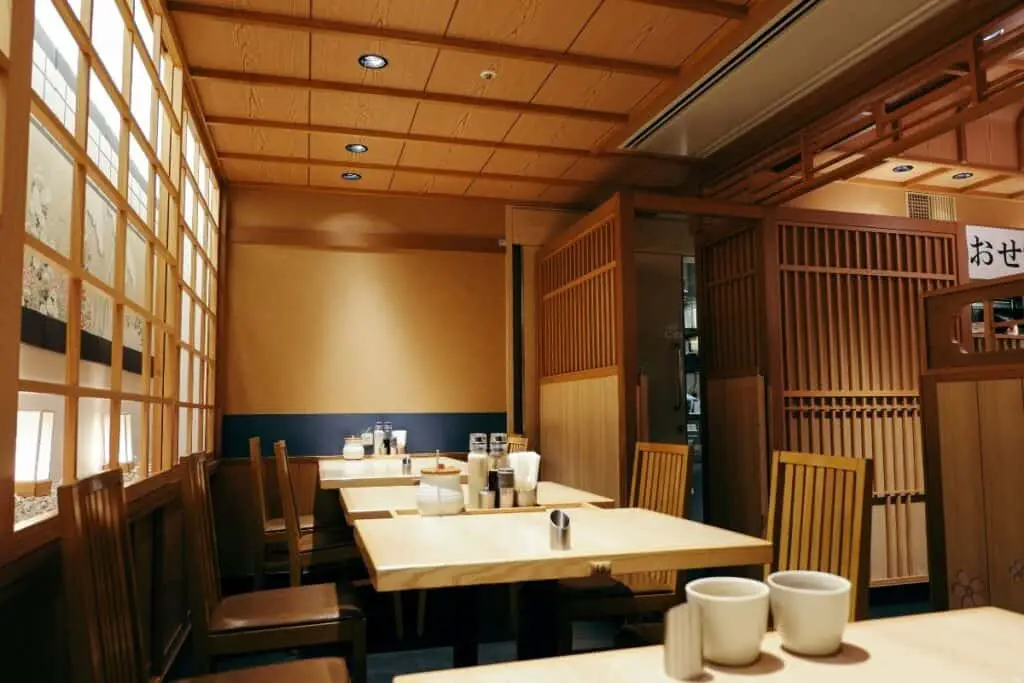
Although you may be quick to assume that Japanese dining culture is exactly like that in the West you would be wrong. Not only will you stick out like a sore thumb when eating in public but you could also come across as rude and impolite which is certainly not a good thing.
So, to help you avoid any cultural etiquette mistakes, here we will run you through the details of eating etiquette and manner when in Japan, covering everything from the table set up to how to eat certain foods.
Tables and seating arrangements
One thing that you may notice at the first glance in more traditional restaurants is that they do not have the typically western-style table and chairs. Instead, some restaurants will have a more traditional set-up with low tables and cushions on the floor.
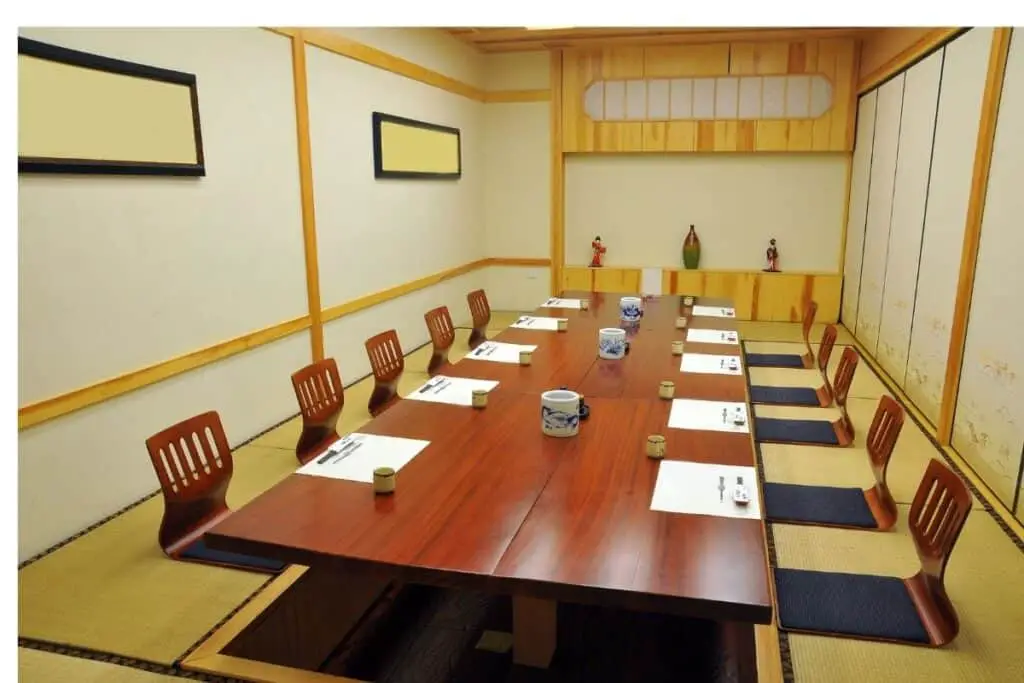
This style of dining set-up is typically arranged on top of a “tatami” floor. With this special flooring, you are normally required to remove your outdoor shoes and walk on the floor only in your socks. When it comes to finding your place at the table you should take the utmost care to ensure that you do not accidentally step on anyone else’s seating cushion.
Eating etiquette
Before you eat
Just like anywhere in the world, there are certain etiquette rules that you are expected to follow when eating. This is both to appear polite to your host as well as to demonstrate good manners to those around you.
In the vast majority of Japanese restaurants, you will be offered a small wet towel with which you are expected to wash your hands. These towels are called “oshibori”.
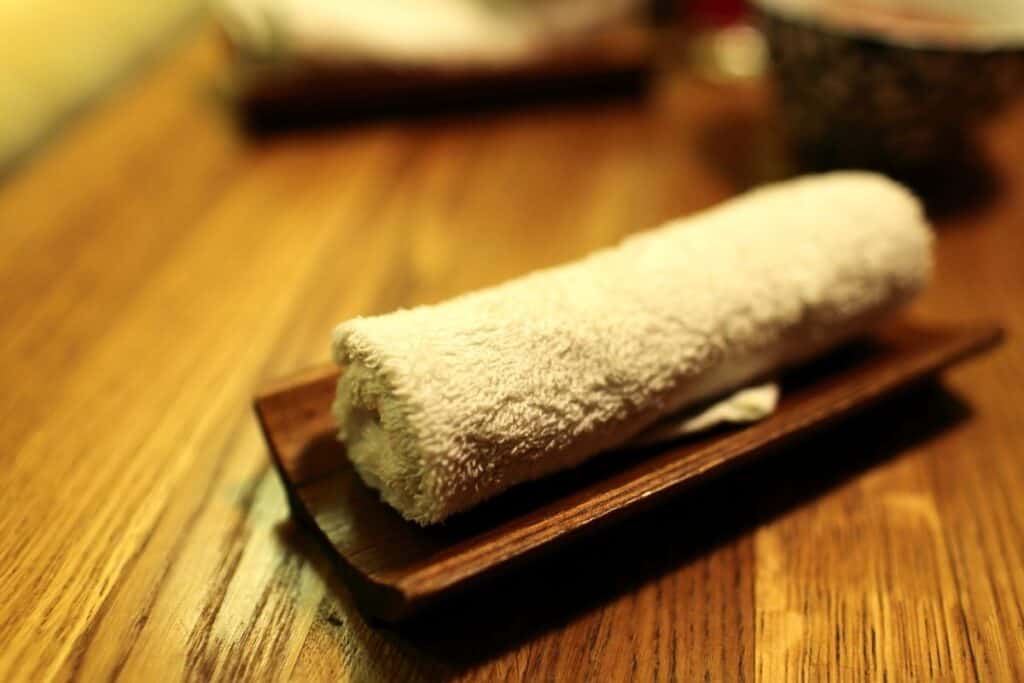
Once you begin ordering you should keep in mind that you should wait until everyone’s food has arrived at the table before you begin eating.
This is considered polite. Once everyone’s food has arrived you should say the phrase “itadakimasu” which means “I gratefully receive” and only then begin to eat.
However, there are a few exceptions to this rule. For example, if you have ordered a type of dish that should be eaten as soon as it is served (sometimes individual sushi) yet others have still not received their food you may ask “osaki ni itadakimasu” which would mean “let me start before you”, to which you may receive the go-ahead in the form of the reply “osaki ni dōzo”.
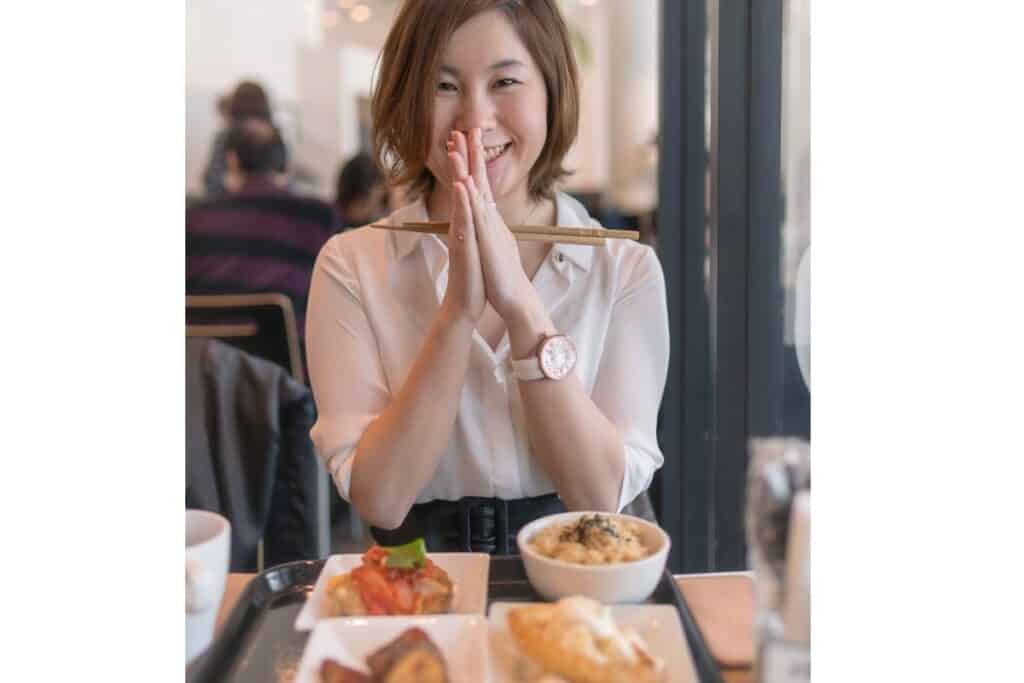
When eating
In Japan, many types of food items are served in small bowls and you should remember that there is a wrong way and a right way to eat from these. You should not leave the bowl on the table and bring the food up to your mouth as this can be considered rude.
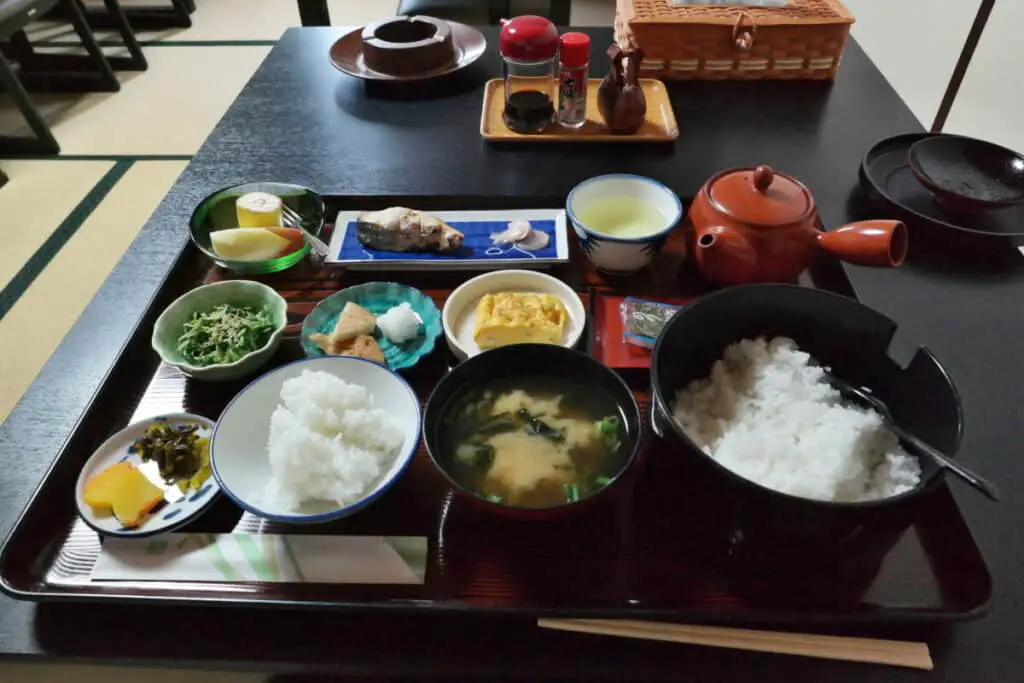
Instead, you should bring the small bowl up to your mouth in order to eat. Remember that this rule only applies to small bowls that are easy to hold in one hand. Larger bowls have a different etiquette rule. With larger bowls, you should allow these to remain on the table and bring your mouth closer to the bowl.
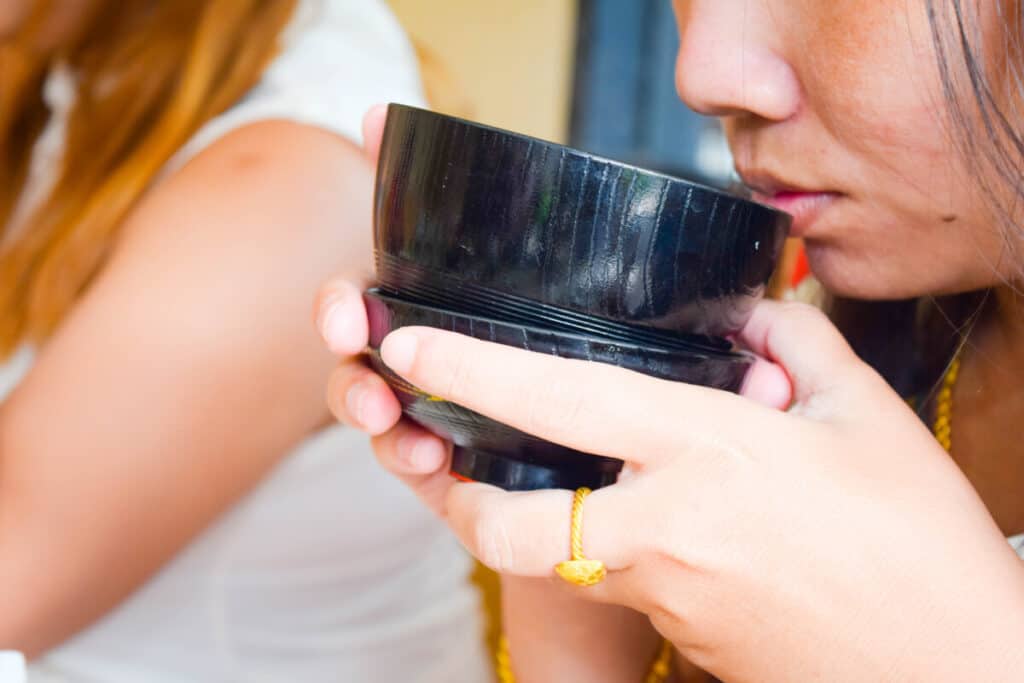
If you are sharing any dishes with someone you should not move the food around with the end of your chopsticks that have touched your mouth.
There are two alternatives: either you use the other end of your chopsticks when touching the food, or you can use any dedicated utensils that have been provided with the dish.
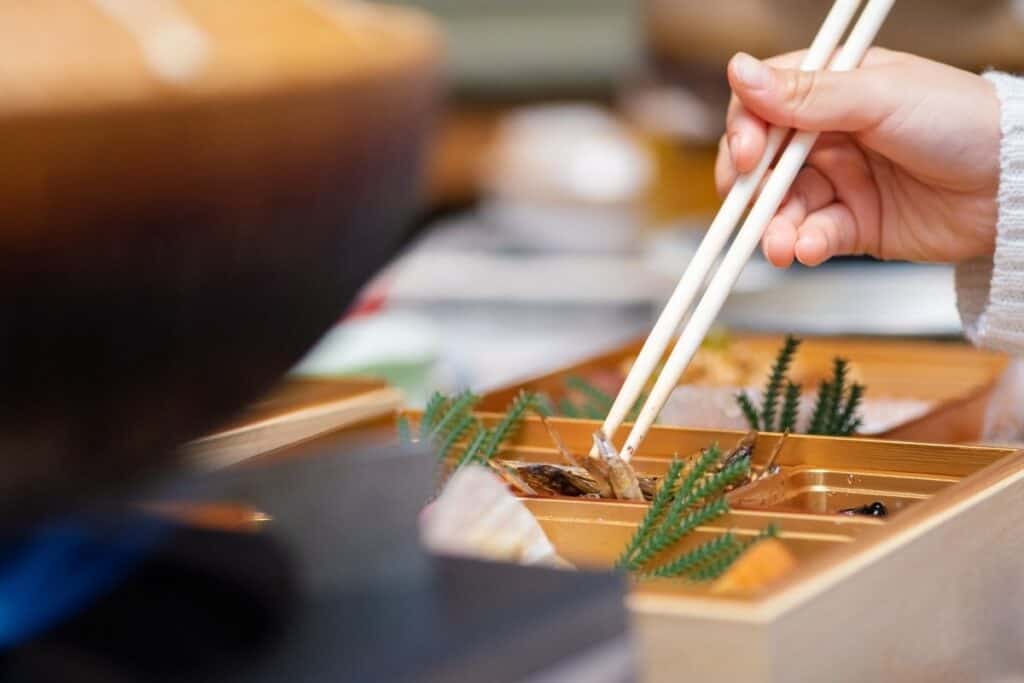
When ordering you should consider just how hungry you actually are as it is considered to be good manners to finish your food to the last bite.
Leaving any food in your bowl once you have finished can be considered rude and be seen as if the food wasn’t good enough to finish.
Common Rules When Eating Sushi or Sashimi
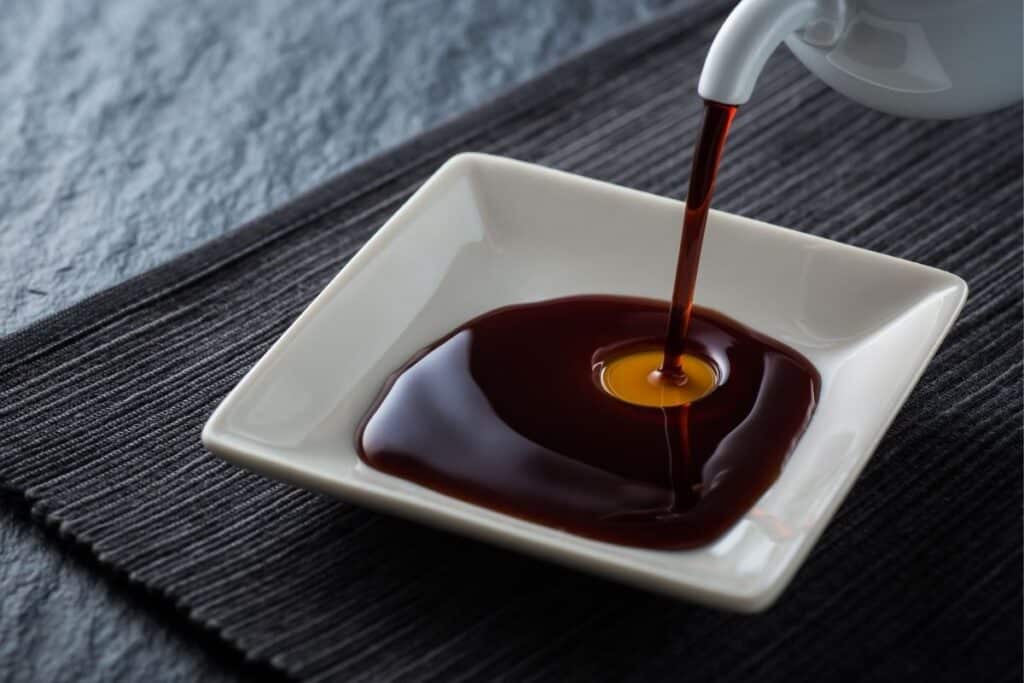
Soy Sauce
Soy sauce is one of the most common seasonings in Japan. Made from soybeans that have been fermented and roasted. There are several types of soy sauce and for sushi, the two most common are standard and light. Standard soy sauce is used for most types of sushi but the light is designated more often for sashimi as to not overpower the flavor of the seafood. It’s best to only use a small amount of soy sauce as it can be salty and mask the great flavors found in sushi.
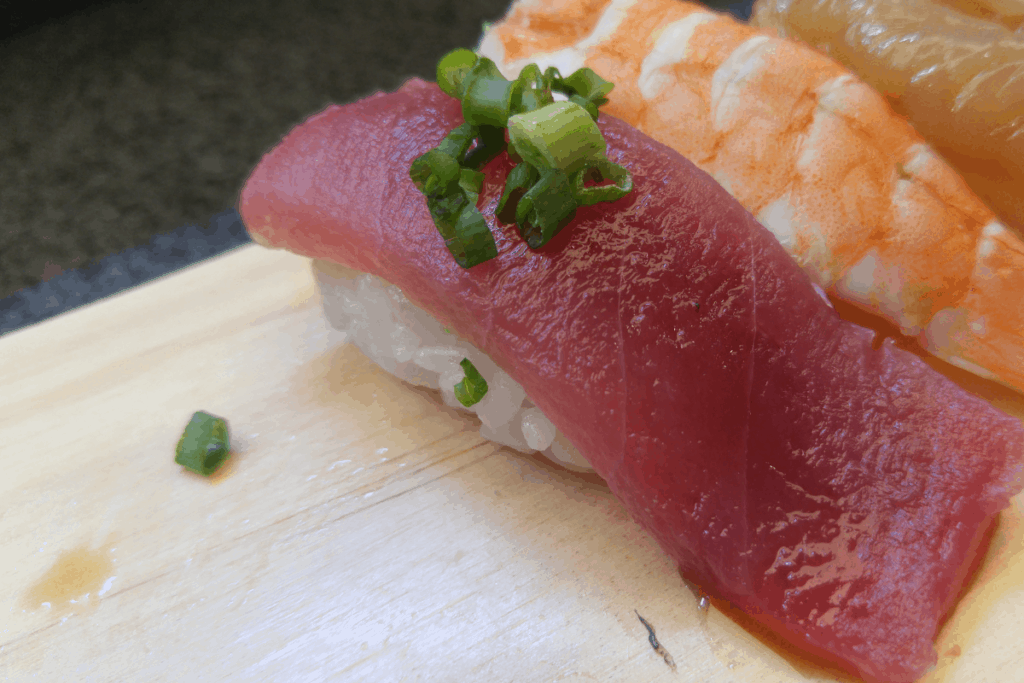
Nigiri Sushi
Rice that is topped with fish, eel, or shrimp or with other items should be carefully laid on their side before dipping them into the soy sauce. Generally, it is considered wrong to dip the rice directly into the soy sauce. Once turning the sushi on its side you will dip the topping into the soy sauce with the rice facing upward.
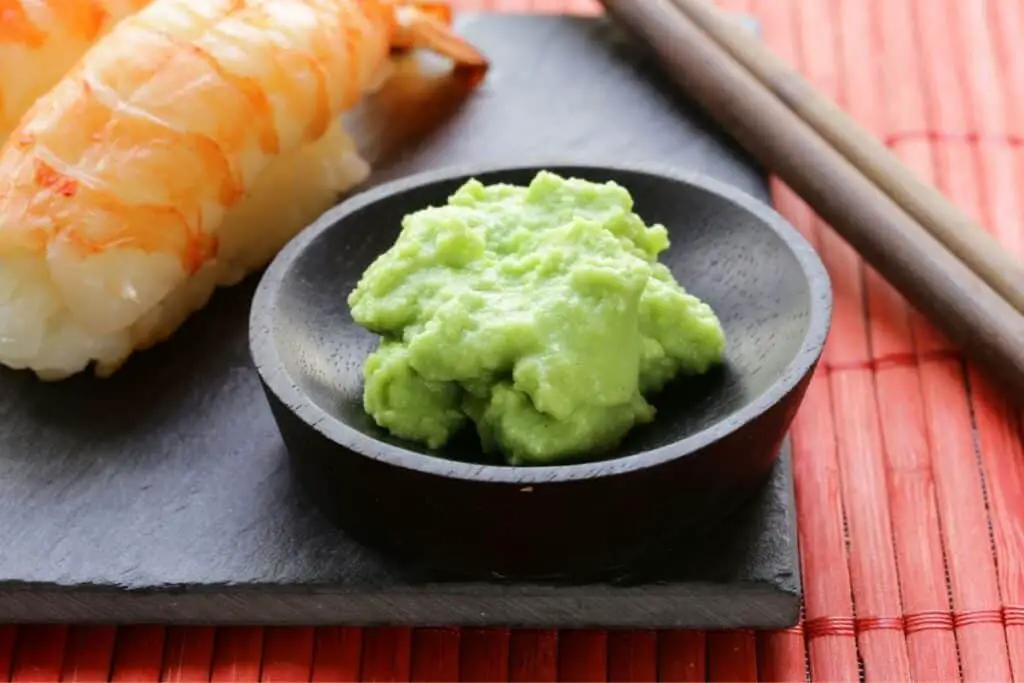
Wasabi
Wasabi is Japanese horseradish and is very potent. Just a small amount can overpower the taste of sushi as well as burn your sinus also. Most rolled sushi will have wasabi already included in it. It’s considered bad manners to add the wasabi and mix it into your soy sauce. If you don’t like wasabi it’s best to ask that it not be included with your sushi.
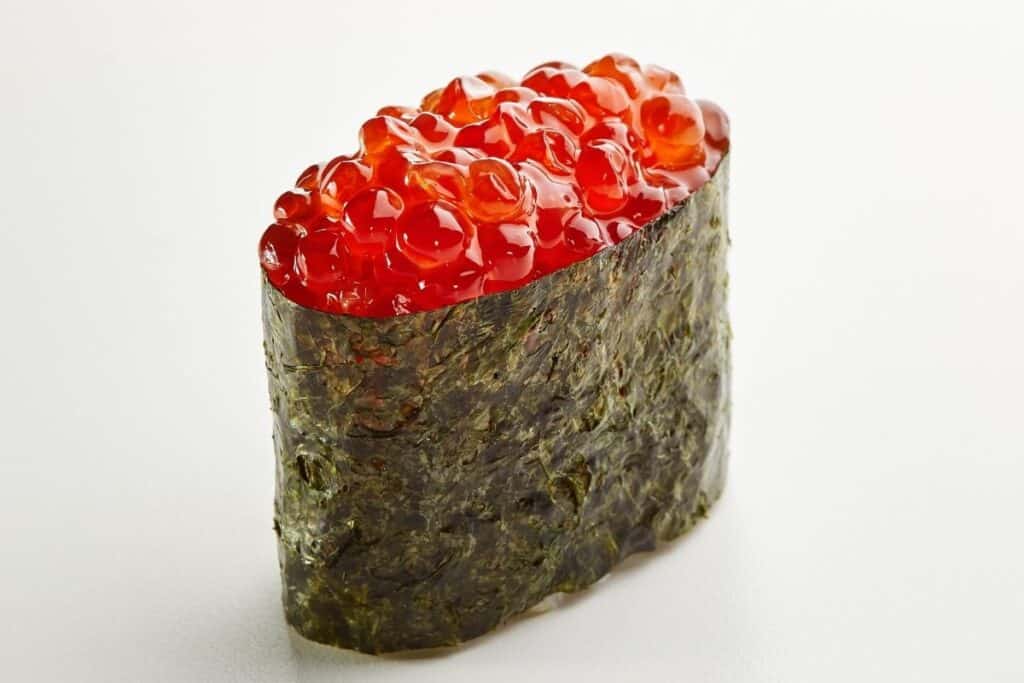
Gunkan Sushi
This type of sushi will be rolled and served on its side as it does have rice but is topped with sea urchin or fish eggs. This type of sushi is best not dipped into the soy sauce but rather a small amount (a few drops) is poured directly onto it.
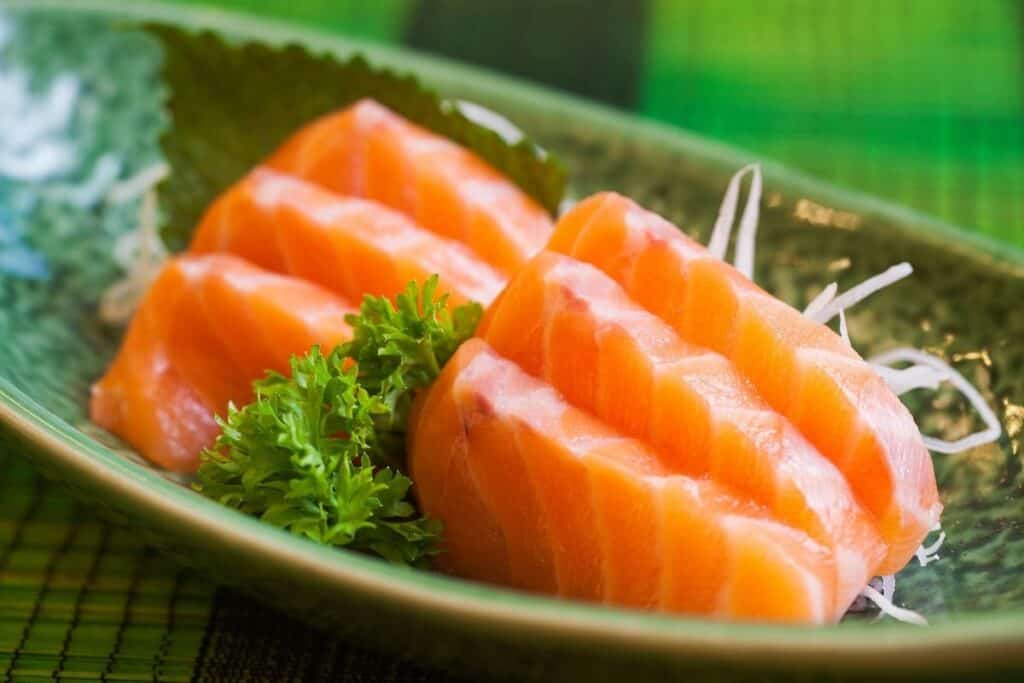
Sashimi
In Japan, sashimi and sushi are considered two separate dishes even though they can contain shared ingredients such as fish. It’s common to dab a small amount of wasabi onto the sashimi then dip lightly into the soy sauce. Sashimi itself is thinly sliced fish and sometimes beef or other types of meat.
Common Rules When Eating Soups, Noodles and Plated Items
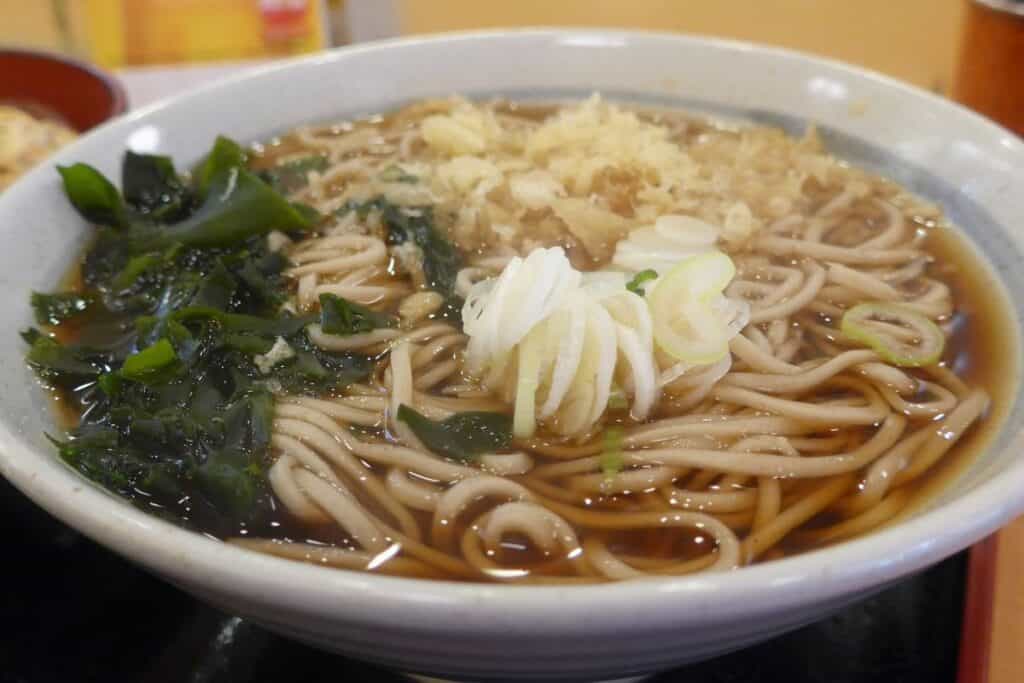
Ramen and Soba Noodle dishes
It’s common to make a slurping sound when eating noodles from the bowl. Picking the noodles up with your chopsticks and putting them into your mouth. Drinking directly from the bowl is also an accepted practice. Some restaurants will provide a large ceramic spoon for the soup stock.
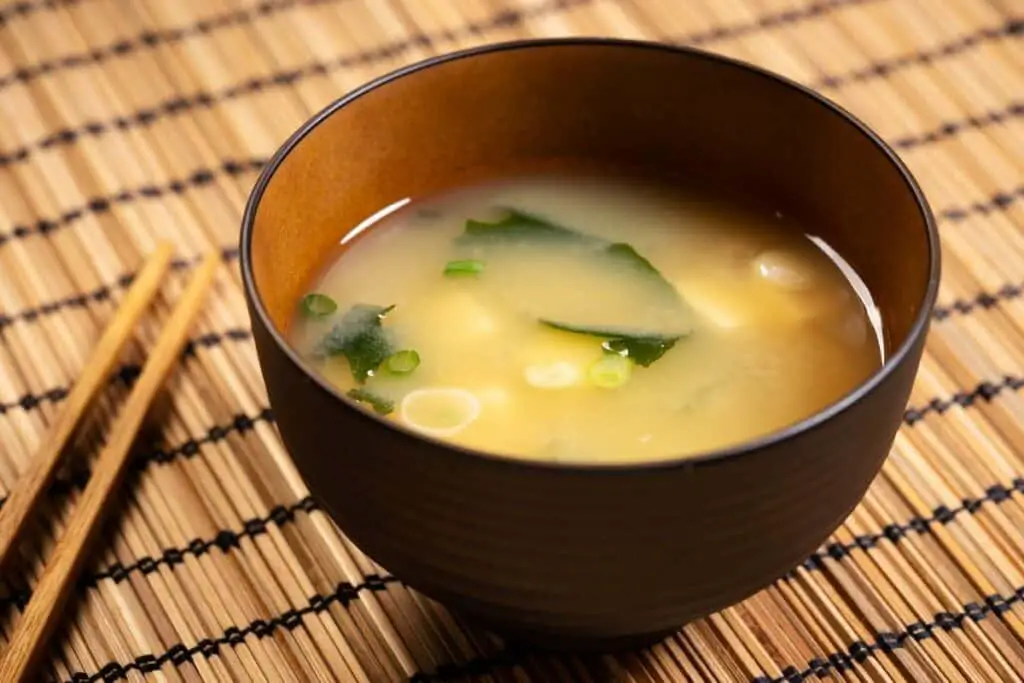
Miso soup
In the west, most Japanese restaurants will provide a large spoon to consume the miso soup. However, in Japan, it’s very common to lift the bowl and drink directly from it. Eating the remaining items in the soup with your chopsticks is how to finish it off. Miso soup is made from tofu, seaweed, onions, and miso paste.
Rice Curry Rice and Tempura or Fried Items
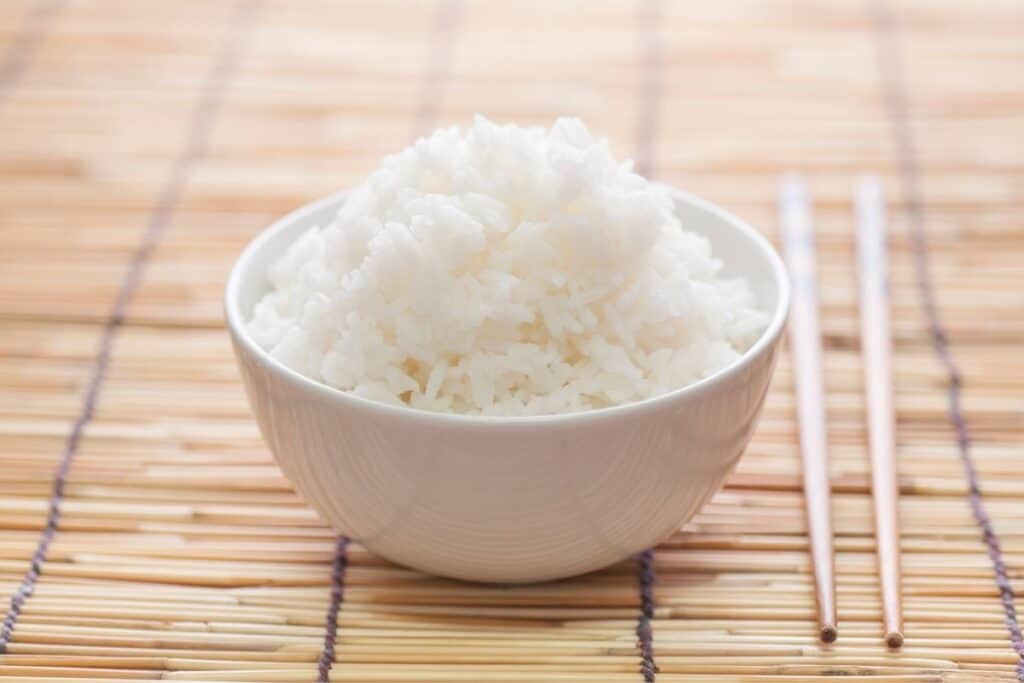
Rice
Rice eaten in the west is notably different from Japan. The rice bowl itself is held in one hand while your other hand holds a chopstick to your mouth. Commonly the bowl is held close to your mouth as not to drop any. Generally, it’s considered wrong to pour soy sauce directly over the rice.
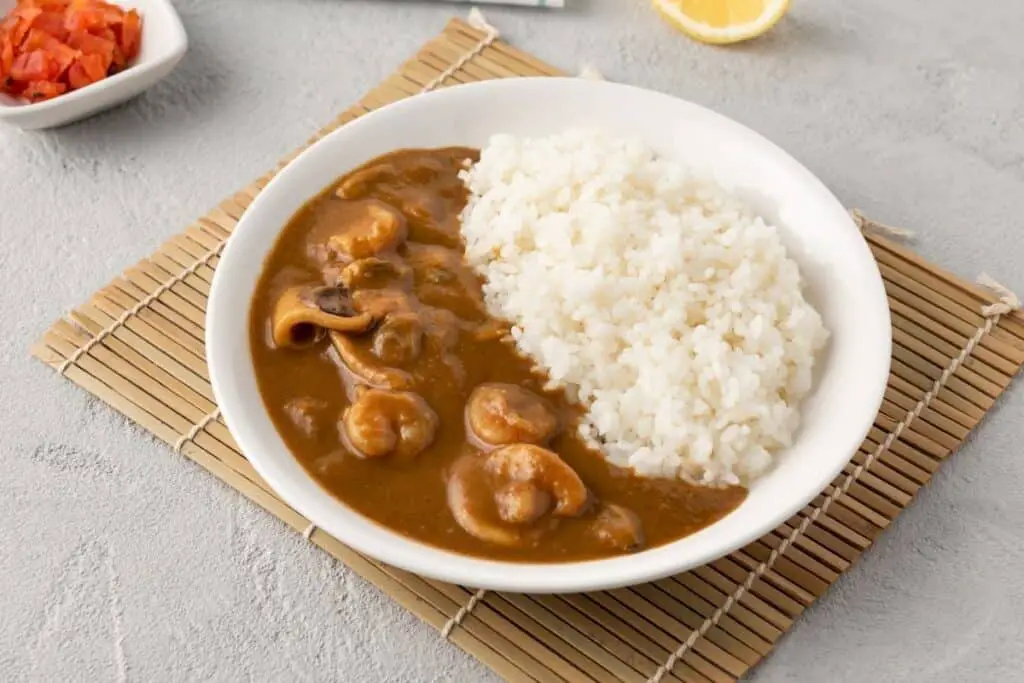
Curry Rice
Curry rice has been a popular dish in Japan for decades if not a couple of centuries. The curry portion of the dish was brought by trade from India. The dish is most commonly eaten with a large spoon and the rice is as well.
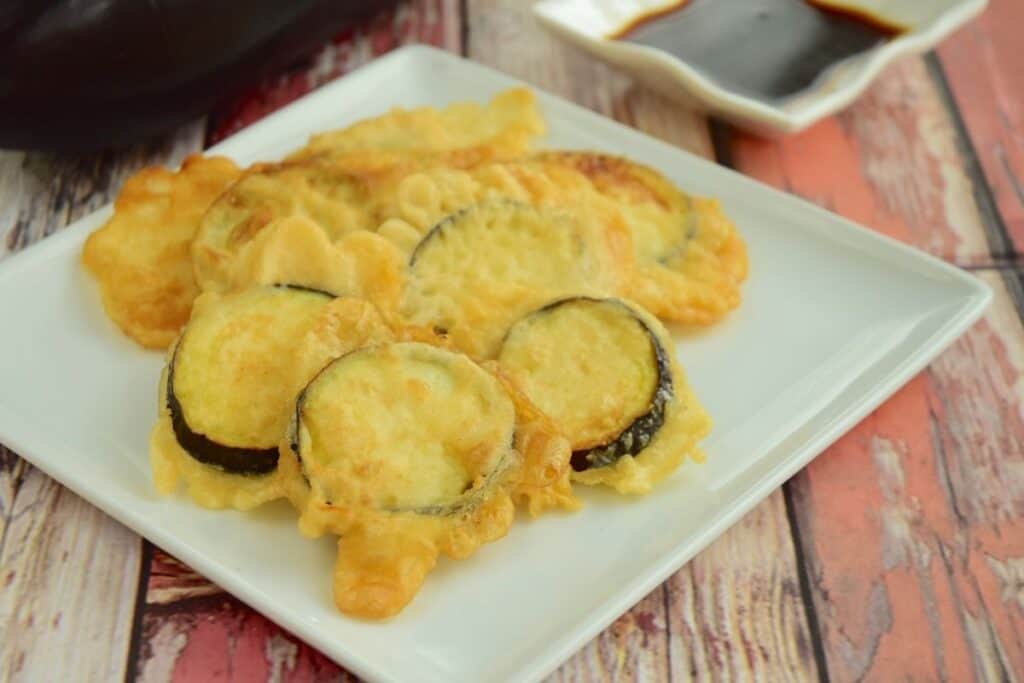
Tempura and other fried items
Many types of tempura are found in Japanese dishes. Fried vegetables, shrimp, and even cheeses can be deep-fried. Most commonly large pieces of the fried item are broken into bite-sized pieces with chopsticks and then consumed.
Some things to avoid when eating Japanese cuisine are to never remove the topping from sushi and dip it into the soy sauce. Avoid mixing wasabi into the soy sauce. Never double-dip any item into a common sauce container. If you are not comfortable with chopsticks then eating sushi by hand is considered normal.

If you have been served a type of food that you cannot eat, for example, because of allergies, many restaurants will often serve you another dish as a replacement without any fuss. Alternatively, in this case, you may leave the food on the table.
After eating
Once you have finished eating you should try to place all of the dishes in the position that they were at the start of the meal. For example, if you have been sharing a dish with someone and now it is next to you then you should place the dish where it was placed by the server.
Additionally, you should place your chopsticks back on the chopstick rest once you have finished eating. Pot lids and dish lids should also be replaced.
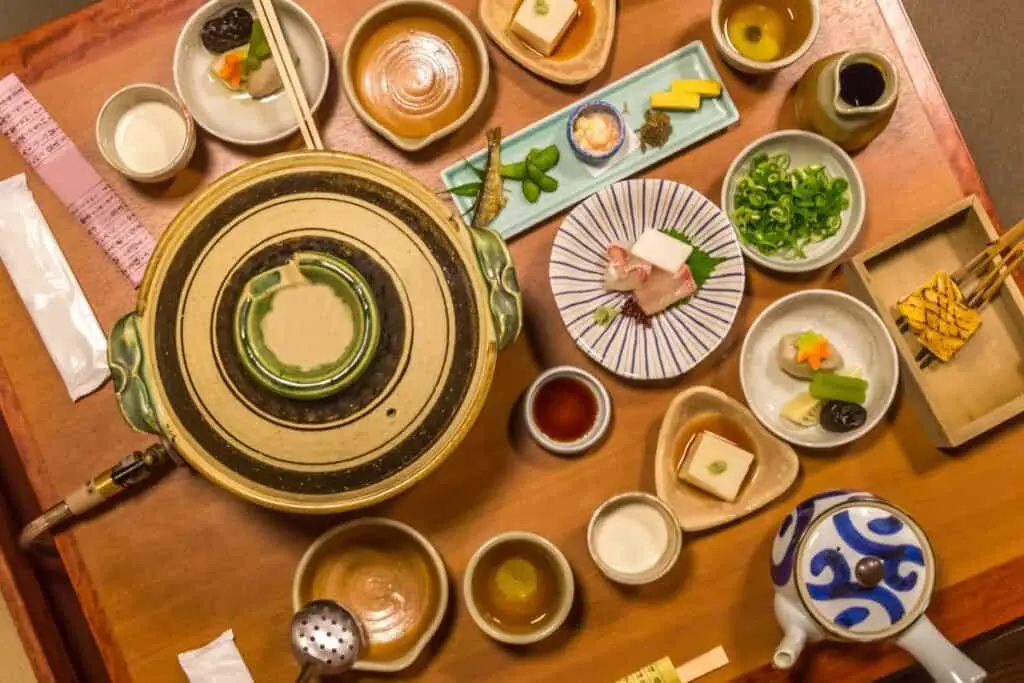
Once everyone has finished eating you should end the meal with the phrase “gochisōsama deshita” which means thanks for the feast. This will show respect to your hosts as well as gratitude for the ingredients and the meal.
Drinking etiquette
Just as there are rules about eating in Japan there are also drink etiquette rules. Just like you would raise your beer glass and say “cheers” in the west, in Japan you would say “kampai”.
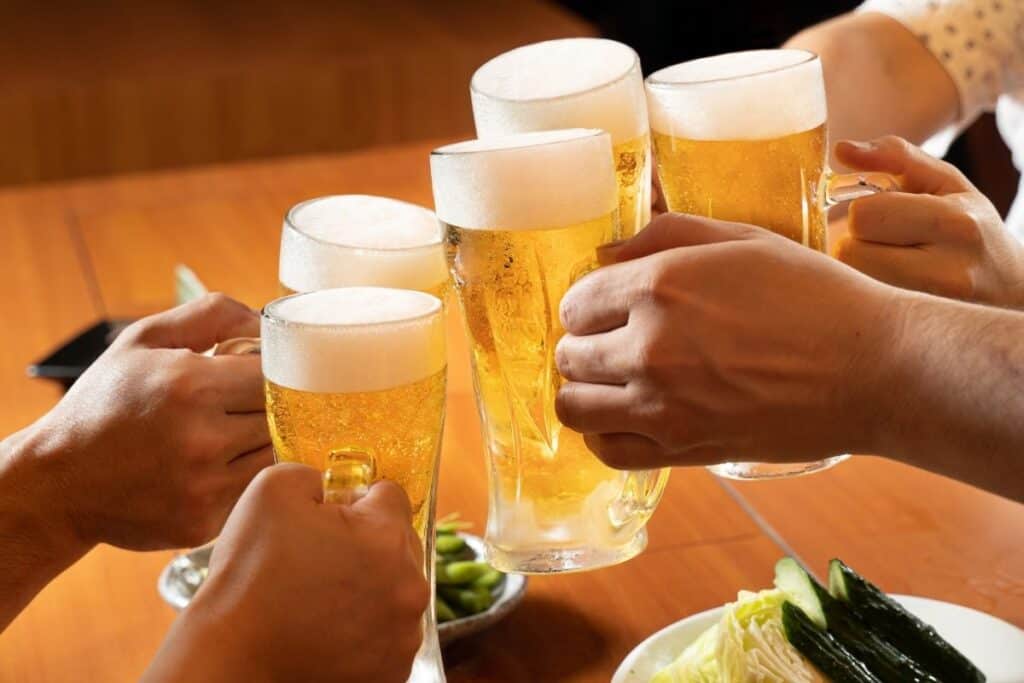
If you are drinking any form of alcohol then it is also considered polite to serve other people and pour their drinks for them, rather than simply serving yourself. If you notice that your friends’ drinks are running low in their glass then you should offer to refill them for them.
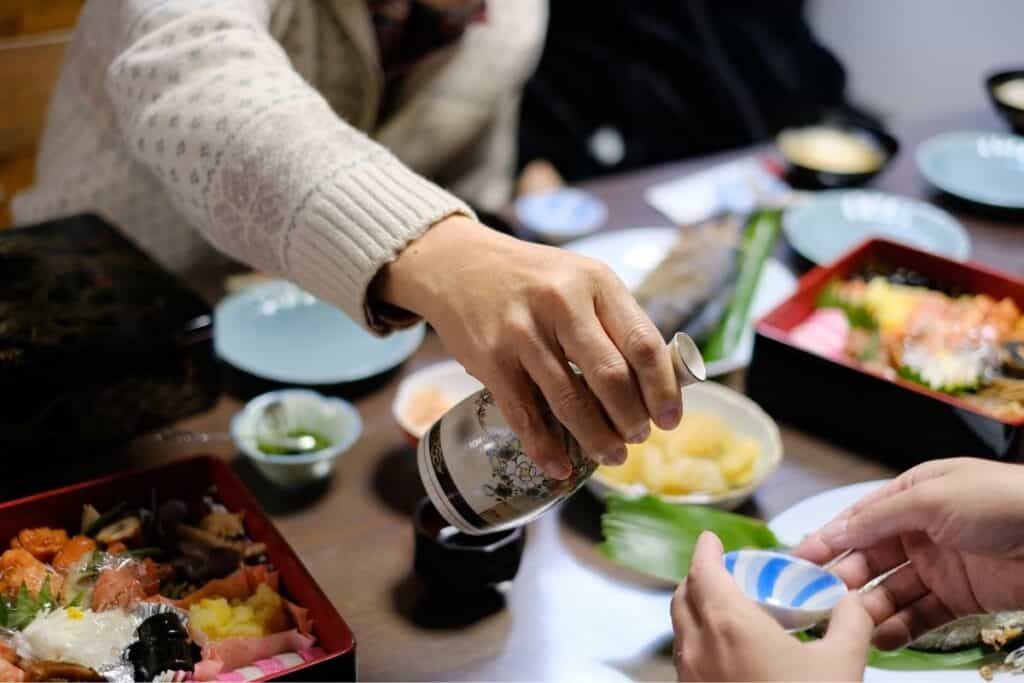
Although many restaurants consider it bad manners to become intoxicated, there are also places where you can eat and drink as much as you like as long as you are not overly loud or disturbing the other customers.
If you would prefer not to drink alcohol then you can politely decline and you may ask for a non-alcoholic drink instead. There are drinks such as teas and juices usually on offer.
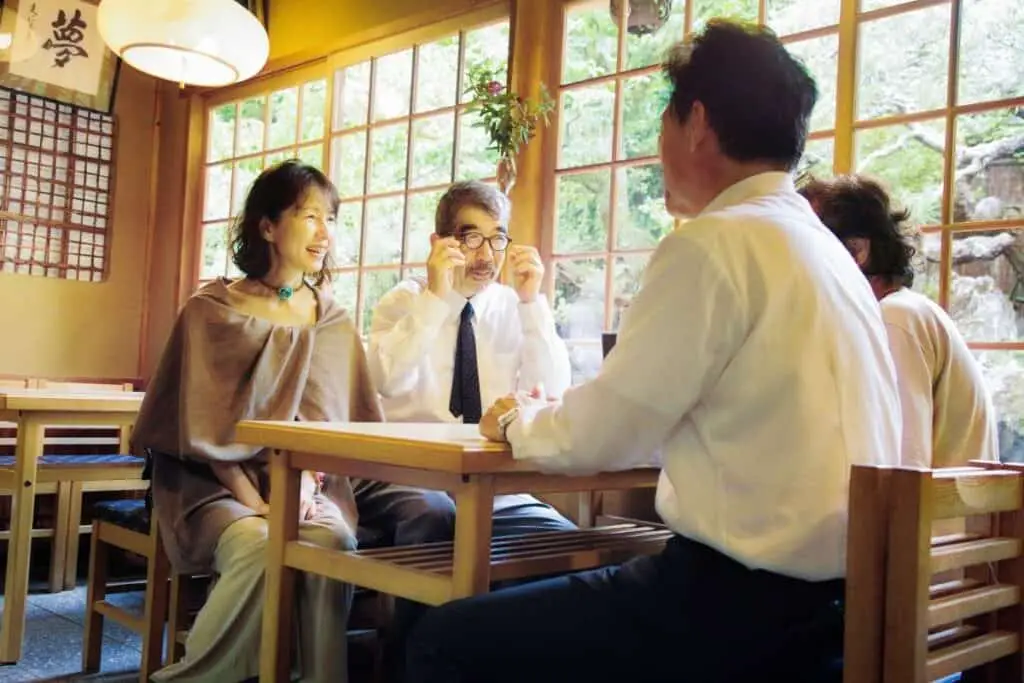
Conclusion
When dining out or with friends in Japan you should remember your manners so that you do not accidentally offend anyone. This can include everything from how you walk to the table, how you serve yourself and others, and even how much you eat.
You should take care in Japan as different restaurants will have different rules concerning how you sit, what you can eat and even how you should behave.
If you are going to be dining in a more western-style restaurant the chances are that you are not going to greatly offend anyone if you forget some of the rules mentioned above. These places are typically more accepting and understanding.
However, if you are visiting a more traditional-style Japanese restaurant then keeping all of these etiquette rules in mind can help you to have a smoother and more enjoyable experience.
It is not the end of the world if you forget some rules of Japanese etiquette, you can simply ask those around for guidance.
